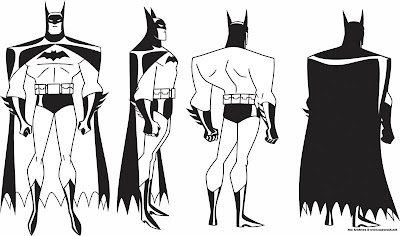Ok, so we looked at Editing, and more clips showing various examples of pacing, camera conventions/shot selections at work, in conjunction with the editing of the films. Think about what information is being presented, how juxtaposition of the images together create a new meaning or element of the story, what the audience knows in relation to what the characters know, and think about some of those theories and "rules" from the lecture notes (Already waiting for you at 'Learning @ GU'). Such as:
Director Edward Dmytryk's :
•"Rule
1: Never make a cut without a positive reason."
•"Rule
2: When undecided about the exact frame to cut on, cut long rather than
short."
•"Rule
3: Whenever possible cut 'in movement'."
•"Rule
4: The 'fresh' is preferable to the 'stale'."
•"Rule
5: All scenes should begin and end with continuing action."
•"Rule
6: Cut for proper values rather than proper 'matches'."
•"Rule
7: Substance first—then form."
(First one from last week which touched on Editing too:
http://masonnotes.blogspot.com.au/2012/10/week-10-clip-recap.html)
Oh, and remember in class when we talked about rhythm, tempo, alternation etc. in editing? I recommend rewatching 'The Good, the Bad and the Ugly' clip for a great example:
http://masonnotes.blogspot.com.au/2012/08/week-3-recap-on-tute-film-clip-examples.html
A continuation of the pacing used throughout the film by juxtaposing scenes/shots and cuts with music from the era (and the subject matter of the music too with the themes from the film/historical context). Malcolm X's assassination, cut with (close friend) Ali's reaction to the news. The context also being that (in the film) the last time they spoke, Ali was upholding the wishes of 'The nation of Islam' to sever ties with ousted minister Malcolm X. Clearly, he is still hurt by the lose of his friend.
Compare the long cuts, medium to longshots employed by Hong Kong action films, as opposed to the quick cut, close in shots many American films use- perhaps a more a commentary on the skill of the Actor and stuntmen in Hong Kong cinema. Also, this, like many JC sequences, would not have been planned out until a visit to the set, in order to find a way to incorporate the surrounding environment (and props you may find in that location) for the scene to be choreographed.
The quick close up shots pieces together give you a bigger picture of the action that is taking place- spinning rims, reflection of enemy cars on paint work, rear view mirror glances, bullet belts, gear sticks- yep, it's a car chase :P. As the environment becomes part of the action/dangers surrounding the cars escalates in the scene, the shots become longer, and the camera wider to accommodate.
As mentioned in the presentation in class, there are a number of things going on in this sequence- using camera conventions and shot selections, the focal points are edited to always keep your attention to the main important elements that are occurring in the frame- edited between the baby being baptized, Michael Corleone become a 'Godfather' to his nephew, and also becoming a 'Godfather' of the Corleone crime family as his enemies are "taken care of". Juxtaposition with the holy ceremony and the "unholy" murders, sold through editing, composition and the pose/expression on 'Michael Corleone's' face.
Note the focal point between the shots following are the same- this happens throughout the sequence/changes in location (McCloud's "Scene to Scene").
For sheer timing in editing, you can't go past looking at a Road Runner cartoon by Chuck Jones. The expression/pose, sold by the timing, makes the joke work. Not the one we watched briefly in class, but you get the idea. Note the Cartoon physics law in play "Coyotus Interuptus"
http://listics.com/200408022076 :P :P
Another form of montage, or "THE" montage- Rocky.
I've "gotta fly now" (lame), but email me if any issues.




























